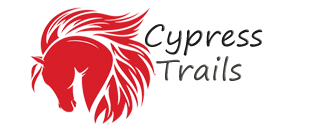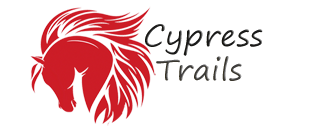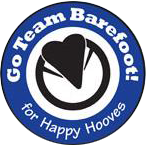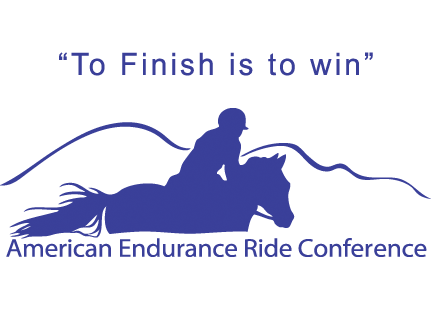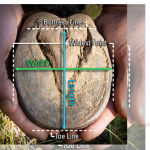Straight from the Hoof
by Yvonne Welz
Editor – The Horses’ Hoof Magazine
No trimming is actually “natural”, as the act of a human trimming a hoof can never be natural. The only “natural” trim is the one a horse gives himself, living in wild conditions.
When we refer to natural trimming methods, we refer to those that include natural living conditions as an important component of barefootedness. Natural trimming also focuses on the natural integrity of the equine foot, with its physiologically correct alignment, ground-parallel coffin bone, and genuine “hoof mechanism.”
What separates the Strasser trim from other natural trimming methods? Dr. Strasser has carried the science of the hoof to a new and much higher level. Her standards of quality in a hoof, and its trimming, are extremely high and demanding. She has developed and perfected this method over the past 2 decades, and therefore has had the time and experience necessary to view the outcome of all her techniques. By encouraging frequent trimming, which more closely mimics the daily gradual wear of wild hooves, the Strasser trim is one of the most natural of trims.
Must there be discomfort involved in the transition process from a shod hoof to a barefoot hoof? First, let’s take a look at the definition of “soundness.” Most people equate “soundness” with lack of pain. If a horse can trot freely, willingly and evenly, he is sound. This, however, is a misconception. A lame horse’s foot can be nerve-blocked, and he will trot “soundly.” Does this make him sound?
Of course not. Just because he cannot currently feel the pain, does not mean the damage is not there. The danger here is that, if the damage cannot be felt, it can continue on, unchecked, with the horse moving in such a way as to increase the damage. Such is the case with shoes, or improper trimming that blocks hoof mechanism and circulation — the horse cannot feel the damage that is actually there in existence.
As soon as the horse is de-shod, and receives a correct trim that increases circulation, he will feel the pain that is the damage already in existence in his hooves. Here is the key: if the hooves have little damage, the horse will not be sore, because there is no reason to be sore. If the hooves have great damage, he will now feel this damage. It is as simple as that.
But isn’t there a way to de-shoe a horse with damaged hooves, and keep them “sound?” By asking to keep the horse “sound,” without concern for healing, you must realize what you are asking for–that the horse be prevented from feeling his ownbody. The horse is NOT sound if a part of its body is damaged, no matter how well it is moving. Any mechanical method used to block the pain, whether it be shoes or trimming that keeps the hoof in an unfeeling state, works the same way, by decreasing sensation through lack of circulation. There will be a price to pay for using these kinds of techniques.
Are all horses uncomfortable after proper trimming? Certainly not. Horses with mild problems, even if they have been de-shod, will often be unaffected, and can continue on normally. Horses with severe problems often find immediate relief for some of their pain. Some horses, unfortunately, have extensive damage inside the hoof that has gone unchecked and is difficult to mmediately detect, so you will always be warned by your CSHS to be prepared for possible temporary discomfort. If your horse’s hooves are extensively damaged, the CSHS will use all of his/her skills and knowledge to create the necessary balance, keeping the horse as relatively comfortable as possible without sacrificing the necessary healing.
Think of a scale, on one side is HEALING. On the other side is COMFORT. If the scale gets out of balance to one side or the other, a horse with hoof problems will pay the price. If the horse is trimmed for comfort only, the healing will cease to continue. The horse’s foot will remain contracted, and there will be no progress in decontraction. He will remain sore on rocky terrain. However, if the foot is built up enough with dead material, all hoof mechanism will cease, the dead contracted hoof material will act as “shoe,” and the horse will feel less pain because of the numbness created by lack of hoof mechanism. But this is going in the wrong direction…
On the other side of the coin, if the horse is trimmed for optimal, complete healing, they can become very sore, and so they need to be maintained in a hoof clinic situation. This is how it is done in Dr. Strasser’s several hoof clinics in Germany and Austria — horses are kept on rubber mats and carefully monitored. Because of this ideal situation, Dr. Strasser and her CSHS can decontract a foot completely in less than 6 months through the use of a hoof clinic. Most founders and naviculars are healed in a very short time also. However, this is not something we can duplicate in the “real world” environment, so a CSHS working in the field will tactfully apply the trim, and balance “healing” with “comfort.” Horseowner’s feedback and constant communication are crucial throughout the transition to hoof health. Owners must be very careful not to overtrim their horses, and try to seek professional guidance whenever possible. Sometimes less is more, but knowledge and education are absolutely crucial, both for owners as well as Hoofcare Specialists and practitioners everywhere.
There is no formula or recipe for a Strasser trim, which is why the year-long course and 800-page textbook are so extensive. There is so much more to applying the Strasser Method than just memorizing a textbook and a trimming formula! You need hands-on training in order to even begin to apply the guidelines accurately to your own horse, who must be trimmed in his own individual way.
“ It must be understood that there can be no absolute values or measurements when dealing with an individual living organism, for which a multitude of factors and conditions exist at any given time — all of which are in a constant state of change, as all living things are.” –from The Hoofcare Specialist’s Handbook by Hiltrud Strasser, DVM & Sabine Kells.
What the Strasser trim is NOT about: 1) The Strasser trim does not draw blood. 2) The Strasser trim does not apply one trim to every hoof. 3) The Strasser trim is not for sick hooves only.
What the Strasser trim is: 1) The Strasser trim is one type of natural trim. 2) The Strasser trim follows the parameters of a physiologically healthy equine hoof, applicable to equines all over the world, regardless of their breed or origin—but respecting terrain adaptations. 3) The Strasser trim is a high performance option that will allow hooves to achieve their highest state of excellence.
Our measure of success: a horse fully rehabilitated with the Strasser method will (given proper living conditions, of course) be able to travel over any terrain, fully barefoot. A healed horse should never have to wear boots. If a horse with proper living conditions is still tender-footed on rocks, it is because the hoof is not fully decontracted, and/or is still in a healing state.
What about other natural trims designed to mimic a southwestern U.S. wild mustang’s feet? They are a nice concept, but most of us can’t keep our horses like mustangs, no matter how great the living conditions. Form follows function. It is very important, crucial in fact, to study these mustang feet and incorporate this knowledge into our hoofcare philosophy and technique. It is just as important to study the feet of other wild equines all over the world, and not just one geographical zone. Dr. Strasser’s trim was designed to provide optimal health to our captive horses, and evolved from her study of wild horses all over the world. Her techniques do not apply to just one type of foot and just one type of terrain, but are adaptable to a wide variety of circumstances as need be.
No matter what the exact trimming technique or method of choice, we support all forms of hoof care that promote barefootedness and natural living conditions. In the large scope of things, the details are not so important. It’s the dawn of a new era, and barefoot horses are everywhere!
The Horse’s Hoof – Issue 8 – Summer 2002
© 2002 by The Horse’s Hoof. All rights reserved.
Used by permission
